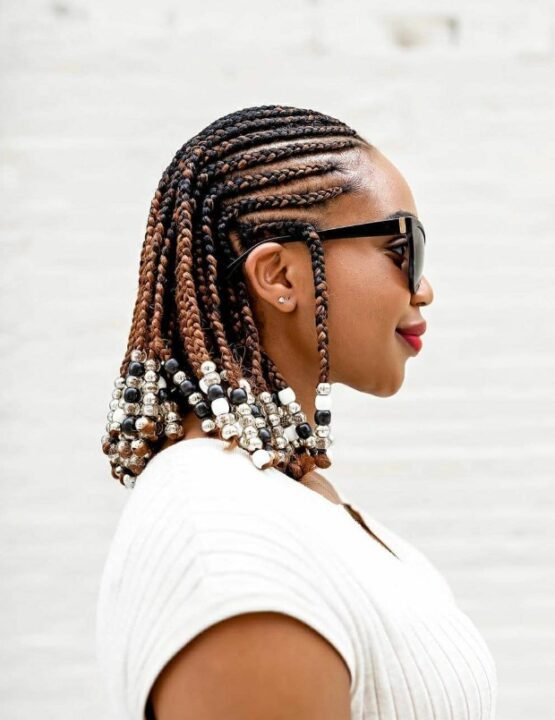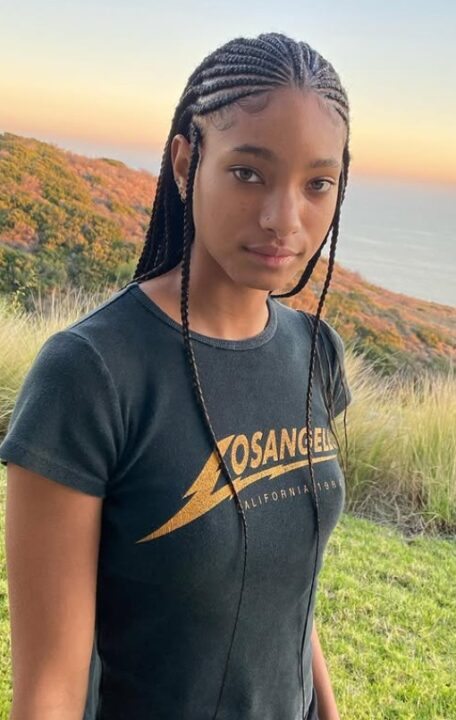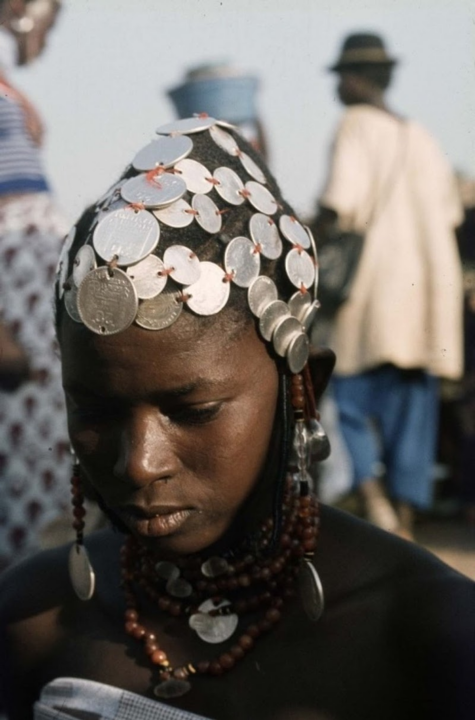Instagram | @justbraidsinfo, @oulfabeauty
As the name implies, Fulani braids originated from the Fulani- a tribe that lives across West Africa, the Sahel, and the Sahara. Also called the Fula people, this hairdo remains the staple among females and is often adorned with silver coins, beads, and cowry shells.
Braids have always been popular in the Black community and that is not a surprise. The type of hairstyle took its roots from Africa, starting with the Himba tribe of Namibia who started braiding as far back as 3500 BC.
The longevity also gave rise to several variations over centuries. While there are many favorites around, the more popular braids include Cornrows, Ghana braids, and Fulani braids. As one would expect, they all have features that differentiate them from others, which is a testament to the cultural richness and diversity of the Motherland.
What Makes Fulani Braids?

Picture source – @naturalhairloving
Fulani braids come in different styles and variations. The hairstyle features cornrows at the front and single braids that hang on both sides of the head; in front and at the back of the ear. Depending on your preferences, you can make the braids as long as the others or shorten the length.
However, what sets it apart from other braid styles is the single braid made at the center of the scalp. This braid is noticeable and runs from the front to the back of the head.

Picture source – @e_scizorhands
Ornaments like cowries, beads, and silver coins are added to perfect the hairstyle. Not only do they give a stylish and regal look, but the ornaments also complete the tribal touch that makes Fulani braids appealing to many.
History Of The Fulani Braids
Fulani braids came from the Fula/Fulani tribe in Africa. Although people used to attribute it to the wrong sources, recent efforts to acknowledge the true origin have been successful. As such, it now bears the correct name of its tribe of origin, as opposed to incorrect names like Bo braids.
You can find the Fulanis throughout West Africa, the Sahel, and the Sahara. They are largely nomadic folks with unique culture, music, and art. While the men have no distinct hairstyle, the women braid their hair into intricate charming patterns.

Jan Broekhuijse , CC BY-SA 4.0, via Wikimedia Commons
These braids not only beautify them but can also symbolize social and marital status and origin. Fortunately, the culture now shares this hairstyle with the world, with celebrities like Alicia Keys, Bo Derek, and Kim Kardashian rocking the braids at one point in time.
Now a staple for Black women around the globe, Fulani braids are one of the many lovely from the Motherland. Its versatility and tribal touch make it easy to connect with one’s roots even when they are not geographically present on the continent.





